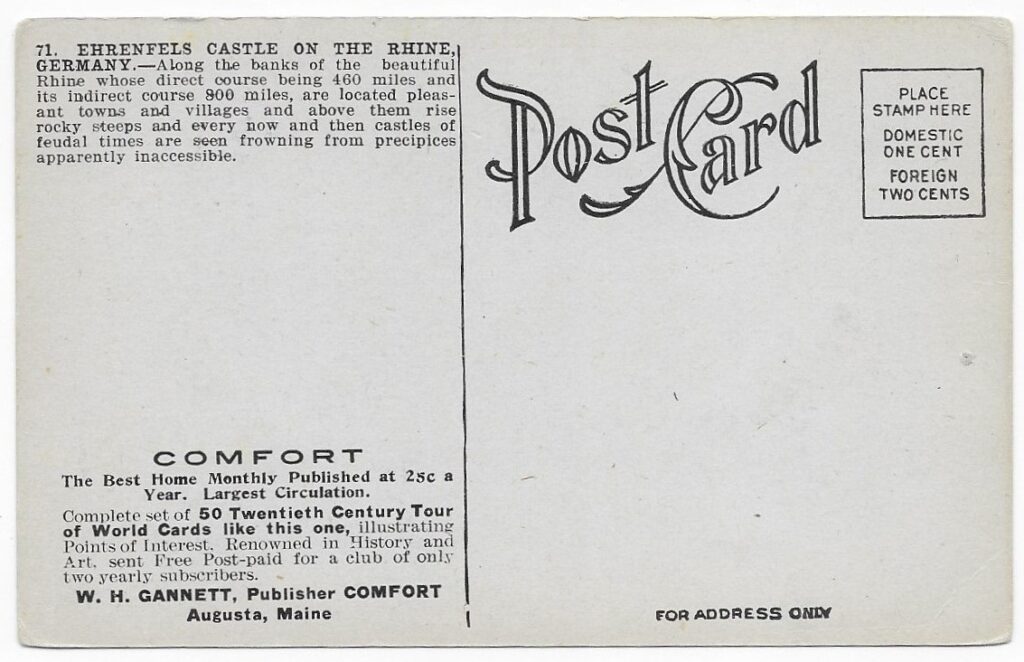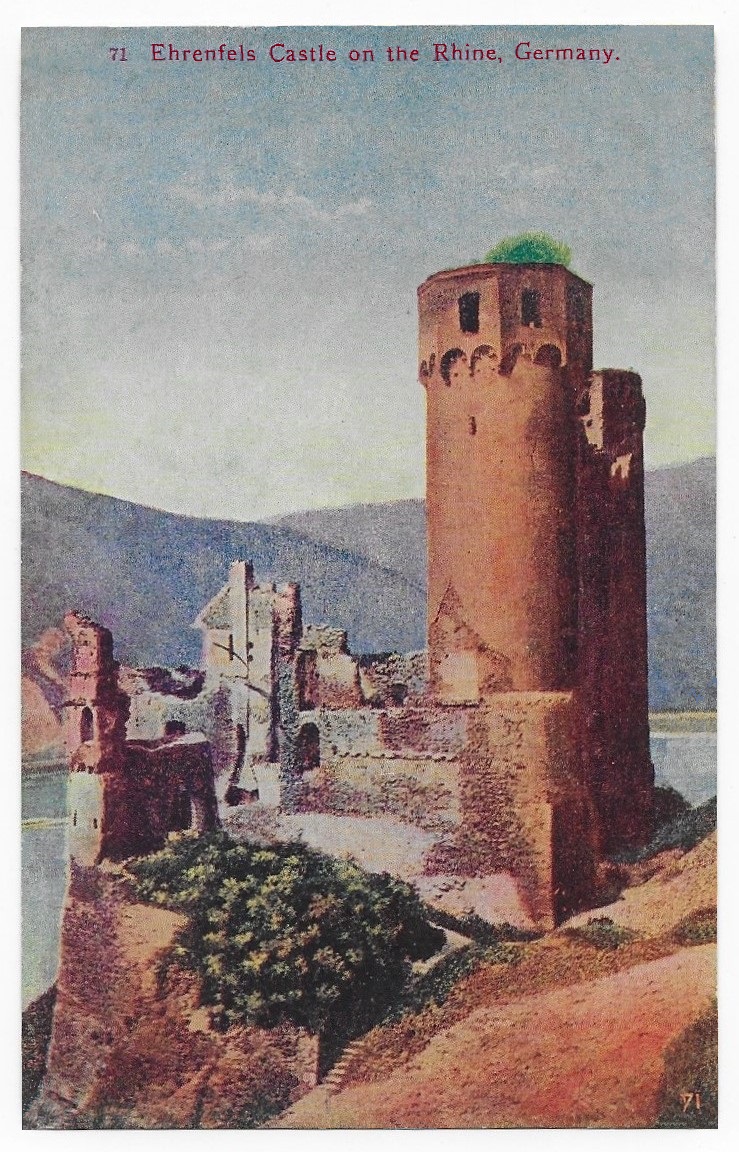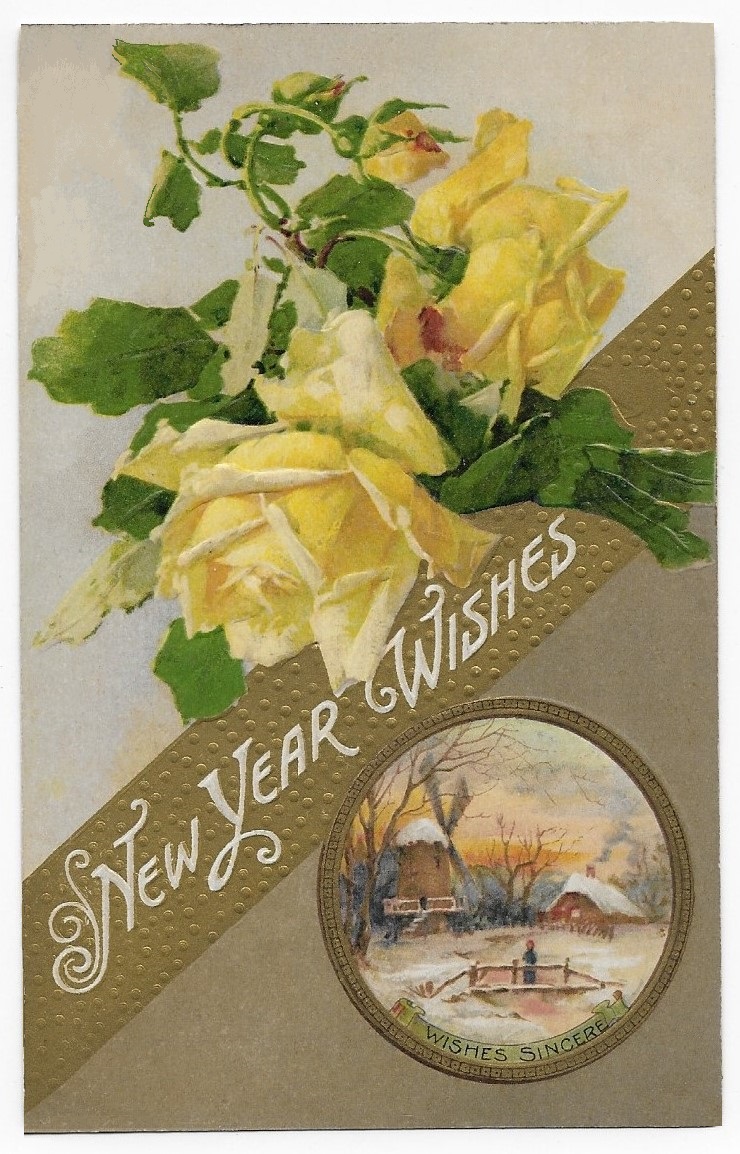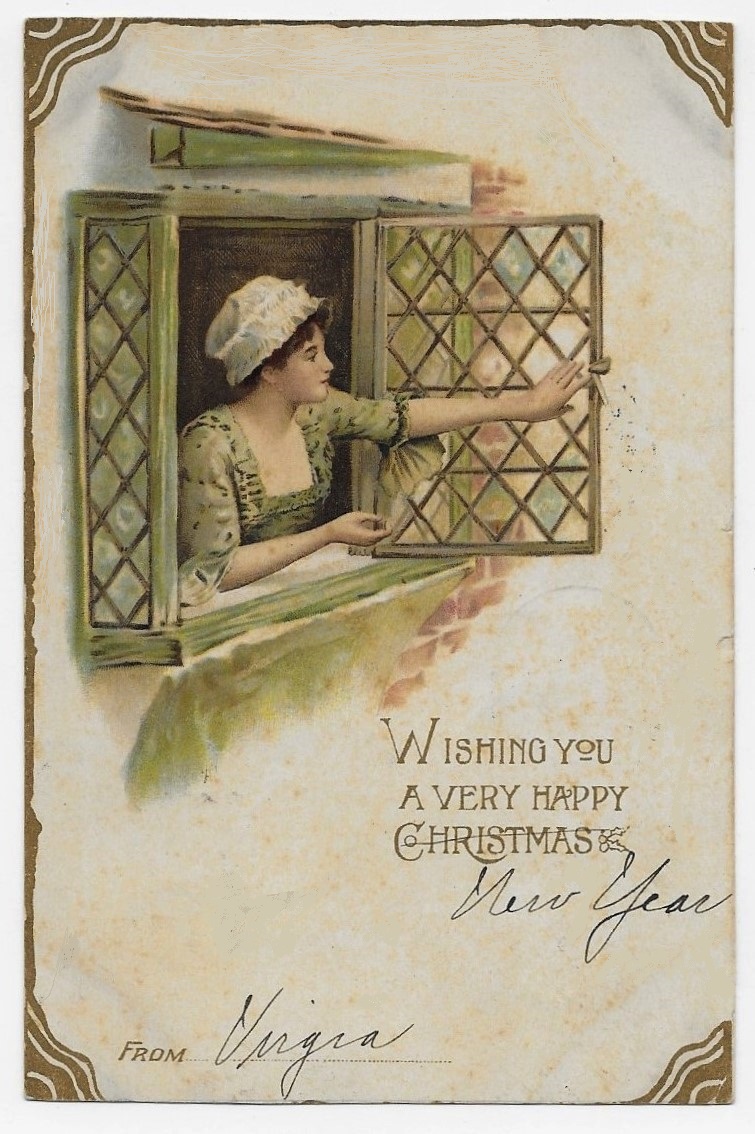Although gazettes, periodicals, journals, and magazines were a part of American life since the 18th century, the early 20th century saw the creation of many new magazines.
Many factors may have contributed to this publishing boom – rising literacy in a generation with mandated public education, an increase in disposable income, and a general awakening of curiosity about the wider world with advances in transportation.
https://en.wikipedia.org/wiki/A_History_of_American_Magazines
We have seen other postcard stories related to subscription offers:
“Loving Greetings from the Publisher” (Household Journal), “A Rural Scene for Goldie” (Woman’s World), and “Renewing Your Subscription” (Home Friend).
+ + + + + + +
This advertisement was not mailed; it may have been distributed through a copy of the magazine or some other method of circulation.
The face of the postcard is a drawing of the ruins of Ehrenfels Castle, one of the many fortifications, keeps, and mountain fasts that continue to attract throngs of visitors to Rhine River cruises.
While some of these medieval strongholds are preserved in good condition, many are slowly crumbling – some bear the scars of destruction from bygone centuries.
Many years ago, I traveled down the Rhine by boat and was thrilled by these survivals of a bygone age.
Further education removes some of the romantic luster of the scene- these ruins represent centuries of bitter and bloody conflict.
From the Google Summary:
The Rhine River, a major European waterway, was once a vital trade route, and the castles along its banks were built to control trade, collect taxes, and defend against conflict.. These castles served as strategic strongholds, often built by nobles and petty rulers who sought to profit from the river’s traffic. The fragmented political landscape of Germany before unification also contributed to the proliferation of castles, as each state or principality built its own fortifications.
+ + + + + + +
Ehrenfels Castle lies on a steep bank of the Rhine in the German State of Hesse.
The fortress came into the possession of the Archbishop of Mainz in 1214 AD – who rebuilt the structure to deter the incursions of the Count Elector of the Palatinate.
Ehrenfels was partially destroyed in the Thirty Years War (circa 1640), and made useless for further military purposes after devastation by French troops in the Siege of Mainz (1689).
In the drawing, one can see a tree and other vegetation growing from the walls.
https://en.wikipedia.org/wiki/Ehrenfels_Castle_(Hesse)
Today, the area around the former fortress is devoted to cultivating the local grape variety – “Ehrenfelser”.
https://en.wikipedia.org/wiki/Ehrenfelser
A popular hiking trail leads through the vineyards to the ruins – although the site can only be entered by appointment with a guide.
+ + + + + +
Comfort Magazine was the first American magazine (printed on a color rotary press) to exceed a million subscribers.
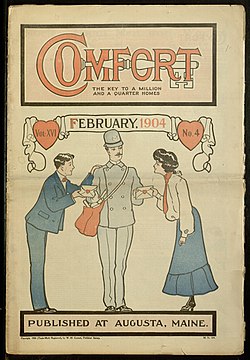
It was founded by William H. Gannet in Augusta, Maine – initially to sell his patent medicines.
The magazine evolved as the US Post Office continued to impose restrictions on cheap second-class postage rates in order to stamp our abuses by advertisers and the early attempts at data collection by publishers whose primary interest was creating enormous mailing lists.
